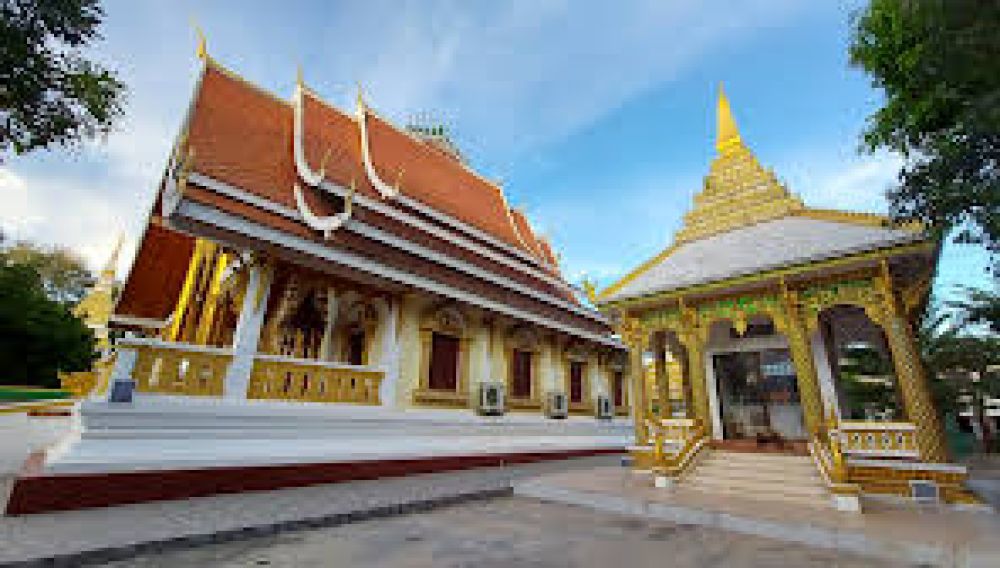

Situated in the heart of Savannakhet, the serene town along the Mekong River, Wat Sainyaphum has been a significant spiritual and cultural beacon for the local community and visitors alike for decades. Established in the early 16th century, this temple stands as one of the oldest and most important Buddhist monasteries in southern Laos.
The history of tourism at Wat Sainyaphum is relatively recent compared to its long-standing presence as a site of worship. Historically, Savannakhet was a tranquil outpost rarely visited by tourists, but through the years, the region's rich cultural heritage and the temple's architectural beauty have drawn the attention of international travelers seeking a deeper understanding of Lao culture and history.
The temple complex, with its intricate carvings, gilded stupa, and a large Buddha statue, serves as a magnificent example of traditional Lao architectural design. It is often highlighted by the tourism industry for its visual appeal and as a representation of Laos's spiritual artistry. Over the years, Wat Sainyaphum has become a cornerstone attraction in Savannakhet, prominently featured in travel itineraries and guidebooks.
In the latest tourism trends, eco-cultural experiences are becoming increasingly popular. Savannakhet's efforts in promoting sustainable tourism practices have aligned with this trend, encouraging visitors to respect and preserve the cultural integrity of places like Wat Sainyaphum while enjoying their beauty. The temple's surrounding area, with its laid-back lifestyle and proximity to nature, further complements the eco-cultural tourism model.
Wat Sainyaphum is not just a static ancient structure; it plays an active role in the community's spiritual life, especially during Buddhist festivals like Boun Pimai (Lao New Year) and Boun Pha That. During these festivals, the temple grounds come alive with vibrant celebrations that offer visitors an immersive cultural experience.
The temple also serves a critical role in local education and community support. Monks at Wat Sainyaphum offer religious instruction and preserve the Lao language, literature, and traditions. By visiting the temple, tourists indirectly contribute to the temple’s sustainability and its educational role within the community, a compelling aspect for responsible travelers.
Improved accessibility has also been a key factor in the rise of tourism in Savannakhet. With enhanced transportation links and a variety of accommodation options, Wat Sainyaphum has become easier for travelers to visit. The local government and tourism operators continue to develop infrastructure and services to cater to the growing influx of domestic and international visitors.
Looking to the future, sustainable tourism development will likely continue to be a focus for Savannakhet's authorities and local communities. By promoting responsible travel, the aim is to preserve Wat Sainyaphum's spiritual significance and historical integrity while providing enriching experiences for visitors.
Whether you're a history buff, a spiritual seeker, or simply an admirer of beautiful temples, Wat Sainyaphum in Savannakhet, Laos, offers a unique window into the rich cultural tapestry of this Southeast Asian country.